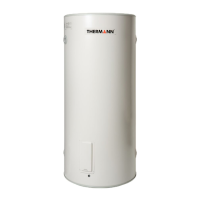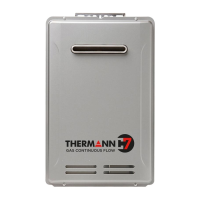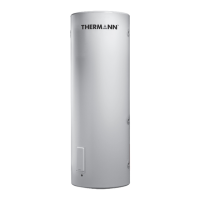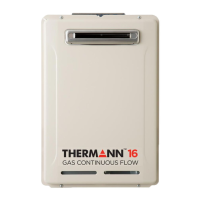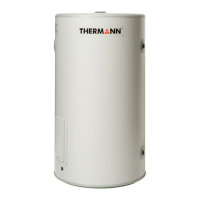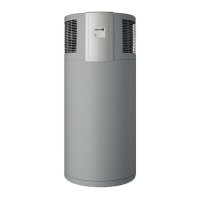What to do if Thermann TIHP300 Water Heater has no hot water even with power?
- JJill SmithAug 1, 2025
If your Thermann Water Heater has power but still isn't producing hot water, check whether the air inlet or outlet is blocked.
What to do if Thermann TIHP300 Water Heater has no hot water even with power?
If your Thermann Water Heater has power but still isn't producing hot water, check whether the air inlet or outlet is blocked.
Why Thermann TIHP300 has no hot water?
If your Thermann Water Heater isn't producing hot water, it might be due to the thermoswitch tripping or the high limit safety pressure limiter switching the compressor off. This can happen if the compressor is overloaded due to high ambient or air temperature (above 42°C), or if there's a refrigerant circuit fault. If this occurs repeatedly, consult a local tradesperson to fix the problem.
Guidelines for appliance use by children and persons with reduced capabilities, emphasizing supervision.
Requirement for separating the DHW heat pump from power supply using a suitable isolator.
Notes on mains water pressure and safety valve drips during the heat-up phase.
Installation must comply with AS/NZS3500.4; tempering valve is mandatory.
Instruction to regularly vent the safety valve until a full stream of water flows from it.
Read instructions carefully before use and retain for future reference. Pass on to new users.
Explains the structure of safety instructions and how risks are presented.
Defines symbols for risks (Injury, Electrocution, Burns) and keywords (Danger, Warning, Caution).
Explains symbols for notes and material losses, and units of measurement used.
Details the appliance's design for heating domestic hot water from ambient air.
Covers warnings for injury, burns, and material losses related to appliance operation.
Refers to checking the type plate on the appliance for relevant test symbols.
Explains how the device extracts heat from ambient air to heat water and produces condensate.
Outlines standard operating modes with heat-up time, temperature, humidity, and COP.
Requirement for licensed tradesperson to check the sacrificial anode periodically.
Highlights that maintenance is generally free, except for specific checks by licensed tradespersons.
Instructions for cleaning evaporator fins using water and a soft brush.
Warning to disconnect power before working on equipment and safety equipment function.
Steps to remedy no hot water, including checking power and air inlet/outlet.
Explains the function of the high limit safety pressure limiter and its reset procedure.
Explains normal drips from the safety valve and condensate drain.
Guidance on contacting a tradesperson and information to provide for faster service.
Emphasizes that only electricians should perform electrical safety checks and disconnect power.
Instructions on removing the air intake grille, securing spring nuts, and preserving the sealing strip.
Warns about sharp fins and recommends protective clothing for evaporator cleaning.
Instructs to disconnect all poles from the mains before any work on the equipment.
Steps for draining the cylinder, including closing the shut-off valve and opening hot taps.
Warns about flammable hydrogen gas accumulation in unused tanks and safe dissipation methods.
Explains safety valve operation, pressure relief, and potential causes for excessive dripping.
Advises regular checking of valves and venting the safety valve, timing based on local water quality.
Log for recording sacrificial anode checks and replacements by a licensed tradesperson.
Details the warranty provider, applicable models, and conditions for repair or replacement.
Specifies warranty periods for different components used in domestic settings.
Specifies warranty periods for different components used in commercial settings.
Details information required and contact details for making a warranty claim.
Lists conditions under which warranty claims may be rejected.
Encourages proper disposal of packaging according to national waste processing regulations.
Identifies the refrigerant R134a, its greenhouse gas status, and GWP.
| Brand | Thermann |
|---|---|
| Model | TIHP300 |
| Category | Water Heater |
| Language | English |
